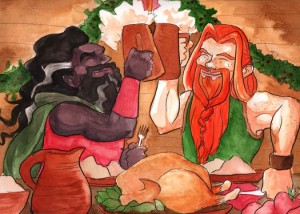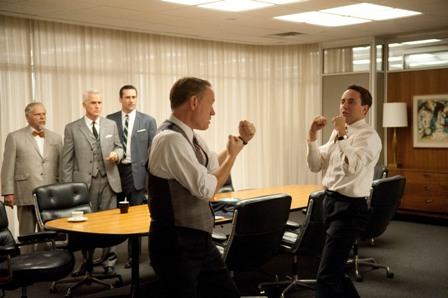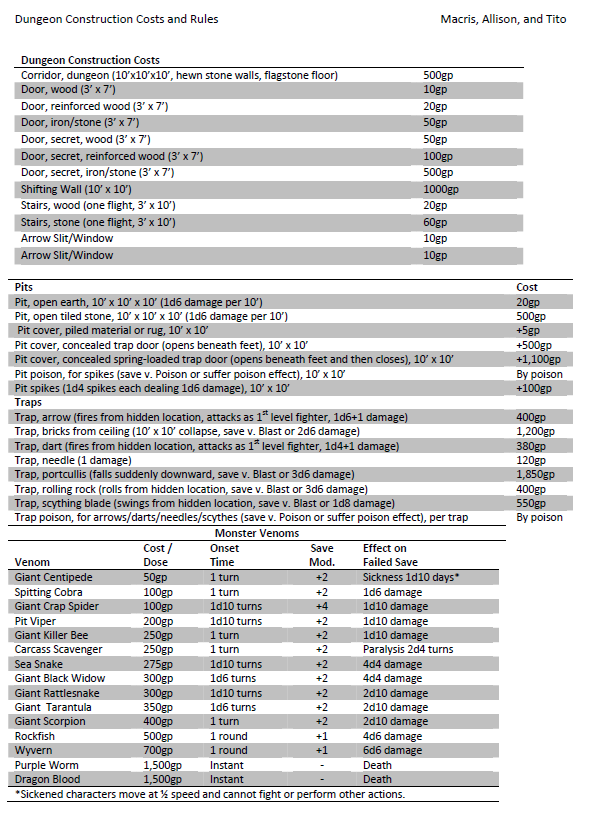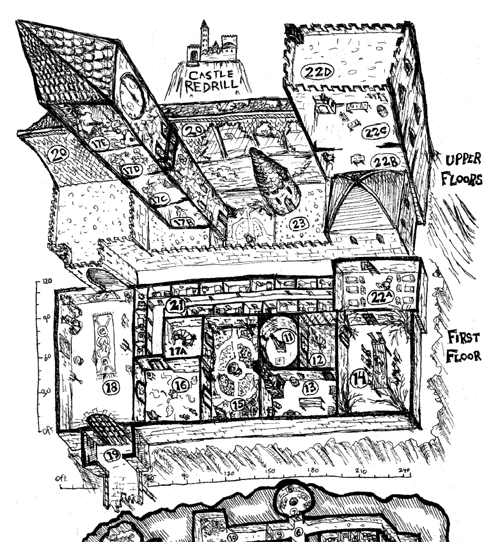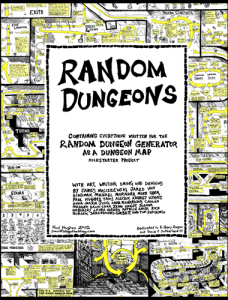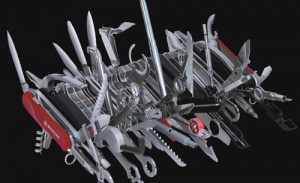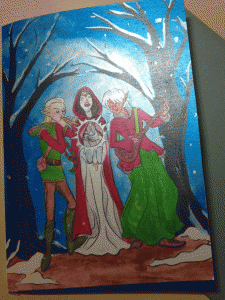Part of the fun of gaming is measuring yourself against challenges and seeing where you stand. In any game except, like, Pachinko, your wins and losses have to do with the choices you made.
Here are some speculations about what “meaningful choices” might mean to different people in D&D, and how it informs people’s choice of edition.
What makes your character-building choices meaningful? By “character-building” I mean choices about class, race, feats, powers, and maybe equipment: character-sheet stuff. Little variations in character power are best measured by pitting the characters against a standardized challenge. Therefore, versions of D&D with lots of character-building options (like 3e and 4e) are best served by having the characters frequently face opponents similar in power to the PCs. That maximizes the chance that small character-building adjustments will mean the difference between failure and success. And indeed, the 3e and 4e rules do expect that opponents will frequently be the right CR or level.
What makes your strategic choices meaningful? By “strategic” I mean high-level decisions made after seeing the opposition. Fight, run, or parley? Hoard resources or go nova with spells? These decisions are most meaningful when the PCs face challenges that can’t always be handled by the same strategy. If every encounter can be handled with a fight, there’s never a reason to run. Therefore, strategic choices are most meaningful when the characters frequently face opponents of varying power relative to the PCs (and the PCs can tell who’s too powerful to fight). Strategic choices are very important in OD&D, where there aren’t a lot of character-building choices, and randomly-encountered monsters have widely varying strengths (especially in the wilderness). Furthermore, in OD&D, there are a limited number of enemy types. You can’t make informed strategic decisions when you’re presented with a constant stream of enemies of unknown capabilities.
What makes your roleplaying choices meaningful? By “roleplaying” I mean making decisons based on your character’s goals, personality, backstory, and relationships with NPCs. These choices are meaningful when the PCs are able to influence the game’s story. If a conversation scene might legitimately make an important NPC a friend or enemy; if the adventure can take an unexpected turn because a PC decides to honor an obligation; if skipping an entire dungeon won’t make the DM mad, then role-playing decisions are meaningful. This happens in games where the characters frequently face NPCs. Apart from skill checks, there aren’t a lot of rules in D&D to handle this sort of thing. During a tense negotiation, a carefully-nuanced speech doesn’t give a mechanical benefit: it relies on the DM’s social sense, gained not from rules mastery but from the DM’s actual experience talking to humans. Roleplaying choices don’t have much to do with rules design and more to do with adventure design. Roleplaying choices can be more important in sandboxy adventures than in linear adventures, like Dragonlance and some of the less flexible adventure-path campaigns.
I’m going to take it as axiomatic that all three types of decision-making are worthwhile (they’re all fun for someone). Every edition of D&D presents character-building, strategic, and roleplaying choices. However, if you’re primarily interested in one of these, that might steer you towards (and away from) a specific system or adventure type.
If you love character-building the most, you should probably play 3e or 4e, and it probably explains why you don’t like the randomness of early D&D.
If you love high-level strategic decisions made during play, you should play early D&D editions or retroclones. You probably don’t like the balanced encounters of later editions.
If you love roleplaying, you can play any edition you want, but you hate DM railroading. Few adventure modules are flexible enough to handle this style well. Your best bet is to find a DM with good improv skills.
I think what’s most interesting about this analysis is how it shows the coherence of various D&D editions. Editions with a lot of character options should provide carefully balanced encounters (and 3e and 4e do). Editions without many character options should provide opponents of random but known strength (and early editions do).
What’s also interesting is what doesn’t cohere according to my analysis: 2e, post-Skills and Powers, has detailed character-building options but doesn’t, I think, have anything like a Challenge Rating system to test yourself against. Lamentations of the Flame Princess concentrates on strategic play, but presents unique monsters of unknown capacities so that you have difficulty making informed decisions.

